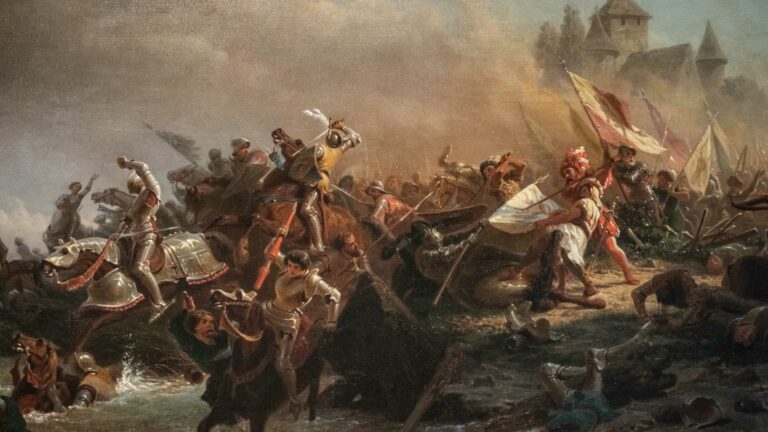Morat was in every sense a victory leaving no questions: For Petermann Etterlin, a participant of the battle, the important thing was that Charles had been defeated for the second time. More than 300 years later George Gordon Noel Byron drew parallels of the victory of the Confederates over Charles to that of the Athenians over the Persians in the Battle of Marathon, both were proud victories of free states over powerful princes achieved through the supreme courage of citizens united as bands of brothers.
June 22nd 1476 (Petermann Etterlin) : “ Ready for the battle, the Confederates moved quickly onward. The horses gave the Swiss additional reach. Those knocked down by the cavalry were killed by the infantry rushing on at the heels of the horses. … the Burgundians had hidden themselves in ovens and were burned in the houses where they were hiding. The Burgundian horses were chased all the way to Payerne. And so the Duke of Burgundy was for the second time painfully separated from all his worldly possessions and forced to flee. … in Morat … more than 30’000 of the enemy were slain. Whoever doubts this can still see today the mortal remains. From the Confederates and their allies less than 50 deaths were reported. ”
1816 (Lord Byron) :
“ While Waterloo with Cannae’s carnage vies, Morat and Marathon twin names shall stand;
They were true Glory’s stainless victories,
Won by the unambitious heart and hand
Of a proud, brotherly, and civic band, … . ”
(Quelle/Source : Gottlieb Friedrich Ochsenbein, the offi cial documents of the Siege and Battle of Murten, Freiburg: ed. Bielmann, 1876, pages 488, 489; Byron, Child Harold’s Pilgrimage, Canto III, LXIV, http://knarf.english.upenn.edu/ Byron/charold3.html, 20th of September 2013)
Region Murtensee / Région Lac de Morat
Hauptgasse 27
3280 Murten




















